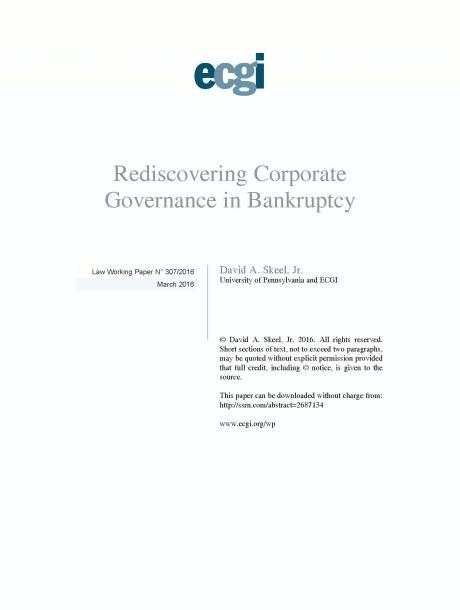
Rediscovering Corporate Governance in Bankruptcy
Abstract
In this Essay on Lynn LoPucki and Bill Whitford?s corporate reorganization project, written for a symposium honoring Bill Whitford, I begin by very briefly describing its historical antecedents. The project draws on the insights and perspectives of two closely intertwined traditions: the legal realism of 1930s, whose exemplars included William Douglas and other participants in the SEC study; and the law in action movement at the University of Wisconsin. In Section II, I briefly survey the key contributions of the corporate governance project, which punctured the then-conventional wisdom about the treatment of shareholders in bankruptcy, managers? principal allegiance, and many other issues. In Section III, I consider two major shifts that have taken place in Chapter 11 practice in the twenty-five years since the study: the rise of creditor influence in Chapter 11, and shifts in the principal participants in (and scope of) large corporate reorganization cases. In Part IV, I explore one of LoPucki and Whitford?s key proposals ? compensation for unsecured creditors when they are made to bear business risk in bankruptcy ? and consider its potential relevance for the hotly debated, current question of the scope of a secured creditor?s lien in bankruptcy.





